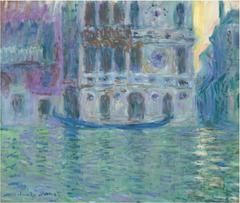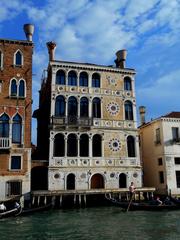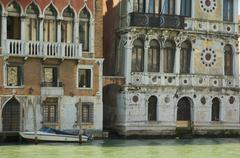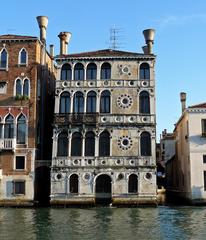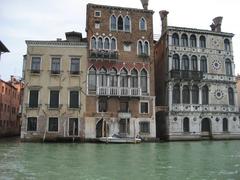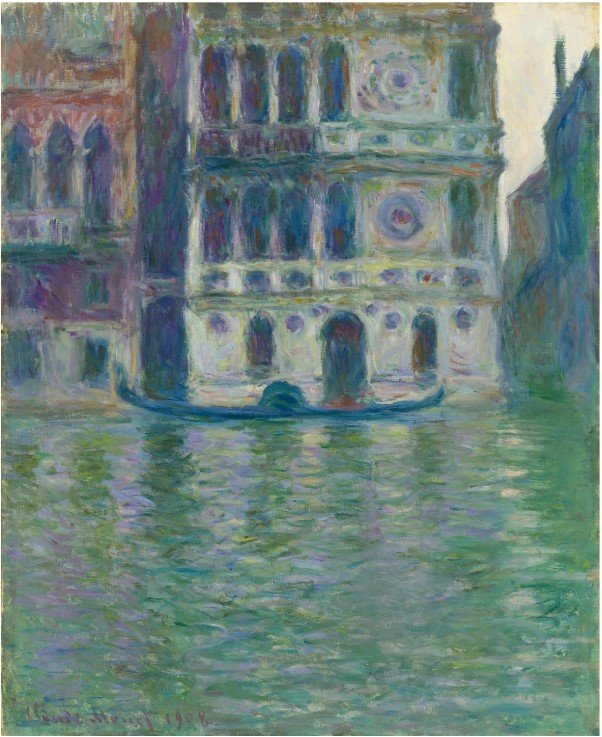
Palazzo Dario, Venice: Visiting Hours, Tickets, History, and the Legendary Curse
Date: 14/06/2025
Introduction
Palazzo Dario, or Ca’ Dario, is a striking symbol of Venice’s layered history, blending architectural brilliance with an air of mystery. Overlooking the Grand Canal in the Dorsoduro district, this 15th-century palace is renowned both for its unique Venetian Gothic and Renaissance design and for the legendary curse that has dogged its owners for centuries. This comprehensive guide details the history, cultural significance, architectural features, and practical visitor information for Palazzo Dario, as well as insights into the enduring fascination it holds for locals and travelers alike.
(visitvenezia.eu; Venice City Tours)
Table of Contents
- Introduction
- Historical Overview
- Visiting Palazzo Dario
- Architectural Features
- Cultural Impact and Legacy
- Frequently Asked Questions (FAQ)
- Visuals and Media
- Further Reading and References
Historical Overview
Origins and Construction
Commissioned in 1479 by Giovanni Dario, a prominent Venetian merchant and diplomat, Palazzo Dario was designed as a dowry for his daughter Marietta. The palace’s architecture is attributed to Pietro Lombardo or his school, showcasing a harmonious blend of Venetian Gothic forms with early Renaissance decorative motifs. Its asymmetrical façade, featuring colored marble medallions and intricate tracery, reflects influences from Byzantine and Moorish styles, making it a standout on the Grand Canal. The use of Istrian stone and rose-tinted marble creates a luminous effect, especially in the shifting Venetian light. (italyscapes.com)
Notable Owners and the Curse
After Giovanni Dario’s death in 1494, the palace passed to his daughter Marietta and her husband Vincenzo Barbaro. A series of tragic misfortunes soon befell the family: bankruptcy, violent deaths, and suicides. Over the centuries, subsequent owners—including aristocrats, foreign diplomats, artists, and financiers—often encountered similar fates, fuelling the legend of a curse. Notable victims include the English historian Rawdon Brown, American businessman Charles Briggs, and Italian industrialist Raul Gardini, all of whom suffered financial ruin or untimely deaths associated with the palace. The curse’s notoriety has only grown, earning the building nicknames such as “La Casa che Uccide” (“The House That Kills”). (imagesofvenice.com; historyhit.com)
Visiting Palazzo Dario
Viewing Tips and Accessibility
Interior Access:
Palazzo Dario is privately owned and not open for regular public visits. Entry is only possible during rare special exhibitions or private events, typically coordinated with the Peggy Guggenheim Collection.
Best Viewing Points:
- Grand Canal: The façade is best admired from a vaporetto (water bus), gondola, or from the opposite bank.
- Nearby Stops: Vaporetto stops Ca’ Rezzonico and Accademia provide convenient access and excellent views.
- Walking Tours: Many guided tours of the Dorsoduro district include a stop outside Palazzo Dario, offering stories of its history and curse.
Accessibility:
The palace’s location and age mean that accessibility is limited. While its exterior can be enjoyed from accessible waterfronts, the building’s interior is not adapted for visitors with mobility challenges. (venicebyvenetians.com)
Tickets and Guided Tours
- Tickets: There are no standard tickets for Palazzo Dario, as it is not open for daily tours. Special events or art exhibitions may require advance booking; check the Peggy Guggenheim Collection for updates.
- Tours: Several local operators offer walking and boat tours that include Palazzo Dario as a highlight, focusing on its history, legends, and architectural features. These tours often combine Palazzo Dario with other nearby sites.
Nearby Attractions
- Peggy Guggenheim Collection: Modern art museum adjacent to Palazzo Dario.
- Ca’ Rezzonico: Museum of 18th-century Venice.
- Palazzo Barbaro Wolkoff: Neighboring residence with its own storied past.
- Rialto Bridge: Iconic Venetian landmark within walking distance.
Architectural Features
Palazzo Dario is a masterpiece of late 15th-century Venetian design. Its façade is characterized by:
- Polychrome Marble Medallions: Circular tondi in red Verona, green serpentine, and white Carrara marble set against pale Istrian stone.
- Asymmetry: Unusual off-balance arrangement of windows and decorative elements.
- Byzantine and Moorish Influences: Intricate tracery, ogee arches, and geometric motifs.
- Water Entrance (Porta d’Acqua): Traditional canal-side doorway for gondolas.
- Rear Facade: Simpler, painted Venetian red, with Dalmatian-influenced windows reflecting the Dario family’s origins.
The interior, rarely seen by the public, is described in historic accounts as featuring frescoed ceilings, ornate stuccoes, and inlaid marble floors—typical of Venice’s Renaissance grandeur. (bonjourvenise.fr)
Cultural Impact and Legacy
The Curse and Its Influence
The enduring legend of the “curse” has shaped Palazzo Dario’s identity, making it a focal point for dark tourism and Venetian folklore. Stories of financial ruin, suicide, and scandal have made the palace infamous, attracting both the curious and the superstitious. The Latin inscription on the façade, “VRBIS. GENIO. IOANNES. DARIVS,” is said to be an ominous anagram warning of treacherous ruin. (historytools.org)
Role in Art and Literature
Palazzo Dario’s unique beauty and tragic associations have inspired artists such as Claude Monet, and writers including John Ruskin and Gabriele D’Annunzio. It is a frequent subject for photographers and painters, particularly for capturing the interplay of light and water on its colorful façade.
Contemporary Significance
The palace remains a symbol of Venice’s complex relationship with fate, loss, and resilience. Its story exemplifies the fine line between history and myth, and the ongoing challenge of preserving cultural heritage amidst modern tourism pressures. (lonelyplanet.com)
Frequently Asked Questions (FAQ)
Q: Can I visit the interior of Palazzo Dario?
A: No, the palace is privately owned and generally closed to the public, except during rare special exhibitions.
Q: Where can I best view Palazzo Dario?
A: The façade is best seen from the Grand Canal—by vaporetto, gondola, or from the opposite bank near Accademia Bridge.
Q: Are there guided tours that include Palazzo Dario?
A: Yes, many walking and boat tours of the Dorsoduro and Grand Canal area stop at Palazzo Dario and offer historical context.
Q: Is Palazzo Dario accessible for people with disabilities?
A: The exterior can be viewed from accessible waterfront locations, but the palace interior is not adapted for mobility impairments.
Q: What nearby sites should I visit?
A: The Peggy Guggenheim Collection, Ca’ Rezzonico, and Palazzo Barbaro Wolkoff are all close by and open to the public.
Visuals and Media
Suggested visuals:
- High-resolution images of Palazzo Dario’s polychrome marble façade with alt text: “Palazzo Dario Grand Canal facade, Venice”.
- Map indicating its location relative to major landmarks.
- Video footage of a gondola passing the palace, highlighting its architectural features.
Further Reading and References
For more detailed information on Palazzo Dario’s history, architecture, and legends, consult the following sources:
- Ca’ Dario and its mysteries: The stories of a cursed building, VisitVenezia.eu
- Palazzo Dario, Wikipedia
- Curse of Palazzo Dario, ItalyScapes
- Palazzo Dario: A Venetian Gothic Masterpiece Shrouded in Mystery and Tragedy, HistoryTools.org
- Palazzo Dario Curse and History, Images of Venice
- Venice City Tours: Venice Palaces – Ca’ Dario
- Ca’ Dario Palace and its Curse, VeniceByVenetians
- Things to Know Before Traveling to Venice, LonelyPlanet
- Venice Travel Tips, TheTourGuy
- Bonjour Venise: Palazzo Dario
- HistoryHit: Palazzo Dario
Final Tips and Recommendations
- Plan ahead: While you cannot visit the interior, include Palazzo Dario on your Grand Canal route and combine your visit with nearby museums for a richer experience.
- Photography: Early morning and late afternoon offer the best light for photographing the palace’s colorful façade.
- Take a guided tour: To fully appreciate Palazzo Dario’s stories and significance, join a guided tour focusing on Venice’s palaces and legends.
- Stay updated: For special events or exhibitions that may allow interior access, monitor the Peggy Guggenheim Collection and Venice Tourism Official Site.
Experience the enduring allure of Palazzo Dario—a true Venetian landmark where architectural beauty and legend meet on the shimmering waters of the Grand Canal.

